Exploring the importance of sculptures in modern New Zealand garden design
Written by
01 April 2025
•
8 min read
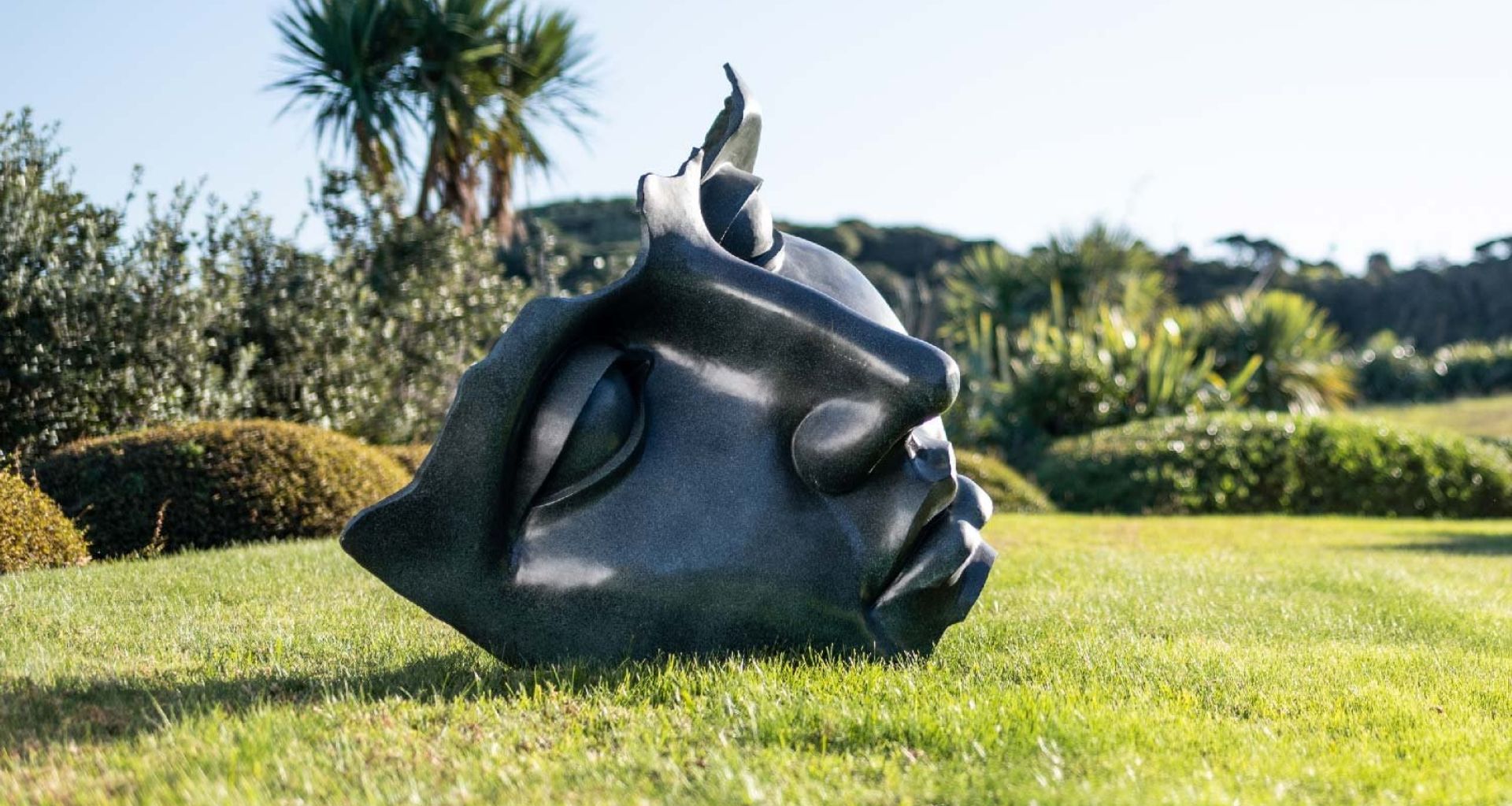
Landscape sculptures are becoming increasingly popular in New Zealand as a means to create ambience and personalise outdoor spaces. However, the form and functionality of sculptures are fast-evolving, bringing new benefits and innovative uses that are leading to some exciting possibilities and potential in design.
The start of a sculptural movement
It wasn’t that long ago in New Zealand when garden statues were largely represented by ornamental gnomes and stone lions, appearing sporadically at best, and often only in the gardens of affluent individuals. Heavily influenced by British ancestral ties, our choices were also limited to a few mass-produced products imported from afar.
The contemporary approach to landscape design in New Zealand is now vastly different. We’ve been exposed to many different styles, a wider range of options is available, and talented artists have emerged. As Laurence Clifford Hullena from Bespoke Sculpture NZ explains, a sense of identity and a growing appreciation are developing as we begin to embrace sculptures and all they have to offer.
“New Zealand's history with garden sculptures is not as deeply rooted as some countries, but in saying that, we have a growing appreciation of artists and artistic impressions of our own culture. Contemporary art movements have contributed diversely, and they're still evolving to a point where it's starting to transform into New Zealand culture.”
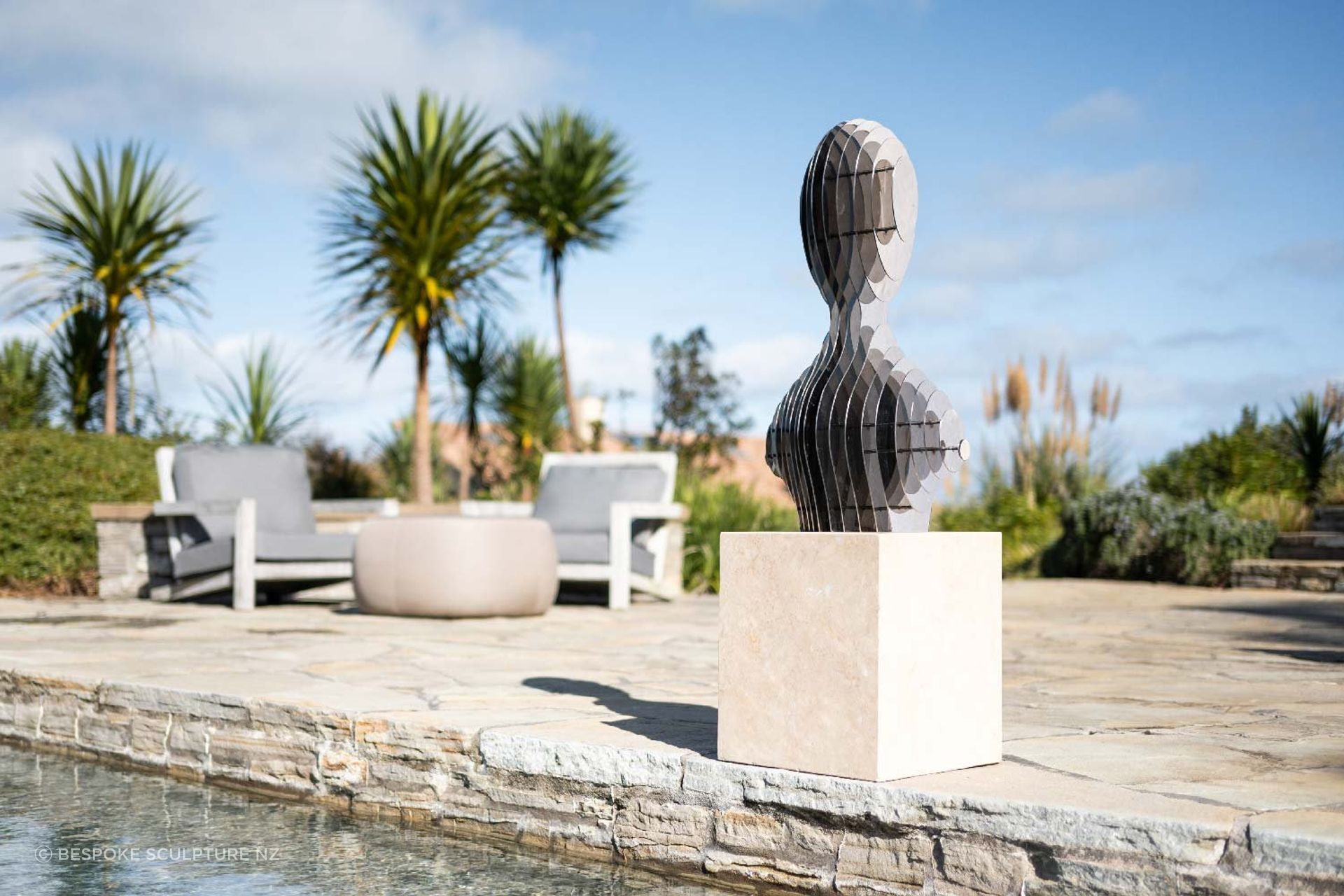
The exposure generated by the increasing number of exhibitions and sculpture trails around the country has almost certainly made sculpture art more familiar and accessible to the wider public, for example, Gibbs Farm in Kaipara Harbour. Online platforms have also undoubtedly played their part. As Laurence continues, this exposure has resulted in growing numbers of sculpture art and commissions.
“Online platforms have created an awareness, and it is certainly growing from our perspective. We get a large variety of enquiries for abstract pieces or things that are authentic to New Zealand. We’ve had everything from requests for old ship anchors to abstract-style fish hooks. We’ve also been commissioned to produce kiwis and other native birds in bronze, which allows for a very specific level of detail, making them instantly identifiable.”
The established and emerging benefits of sculptures
The increasing importance of sculptures can be seen when you look at the qualities they can bring to a landscape. This includes the tried and true attributes that have always been, along with a few traits that may surprise you.
1. Visual impact
The visual impact of a landscape sculpture is undeniable, especially with any large-scale installation designed to draw the eye. They inspire a sense of marvel, a feeling which can permeate to a point where it becomes the identifiable feature of a property. Laurence shares that many in business are already utilising this to their advantage.
“We have a project going on at the moment with a developer for a six-and-a-half metre gecko that's two storeys off the ground. That building will be totally unique, and anyone who goes past it will not forget it. They’ll know exactly where it was, and it will ultimately become a part of the culture of that South Island city.”
2. Environmental harmony
As well as making a statement, sculptures can also reflect, complement and enhance the natural surroundings that they’re in. This is a particularly popular approach in New Zealand — a country that takes great pride in its wondrous landscapes and cherishes its natural environment.
“One of my most memorable moments was placing the first red stag sculpture on a newly redeveloped property in Morrinsville. The owner had envisioned it for years, and after transforming the landscape with wild flax, alpine tussocks, and stonework, the setting was finally complete. The moment we positioned the stag, it felt as though it had always been there, perfectly at home in its surroundings. Seeing the client’s excitement and satisfaction made it an incredibly rewarding experience.”
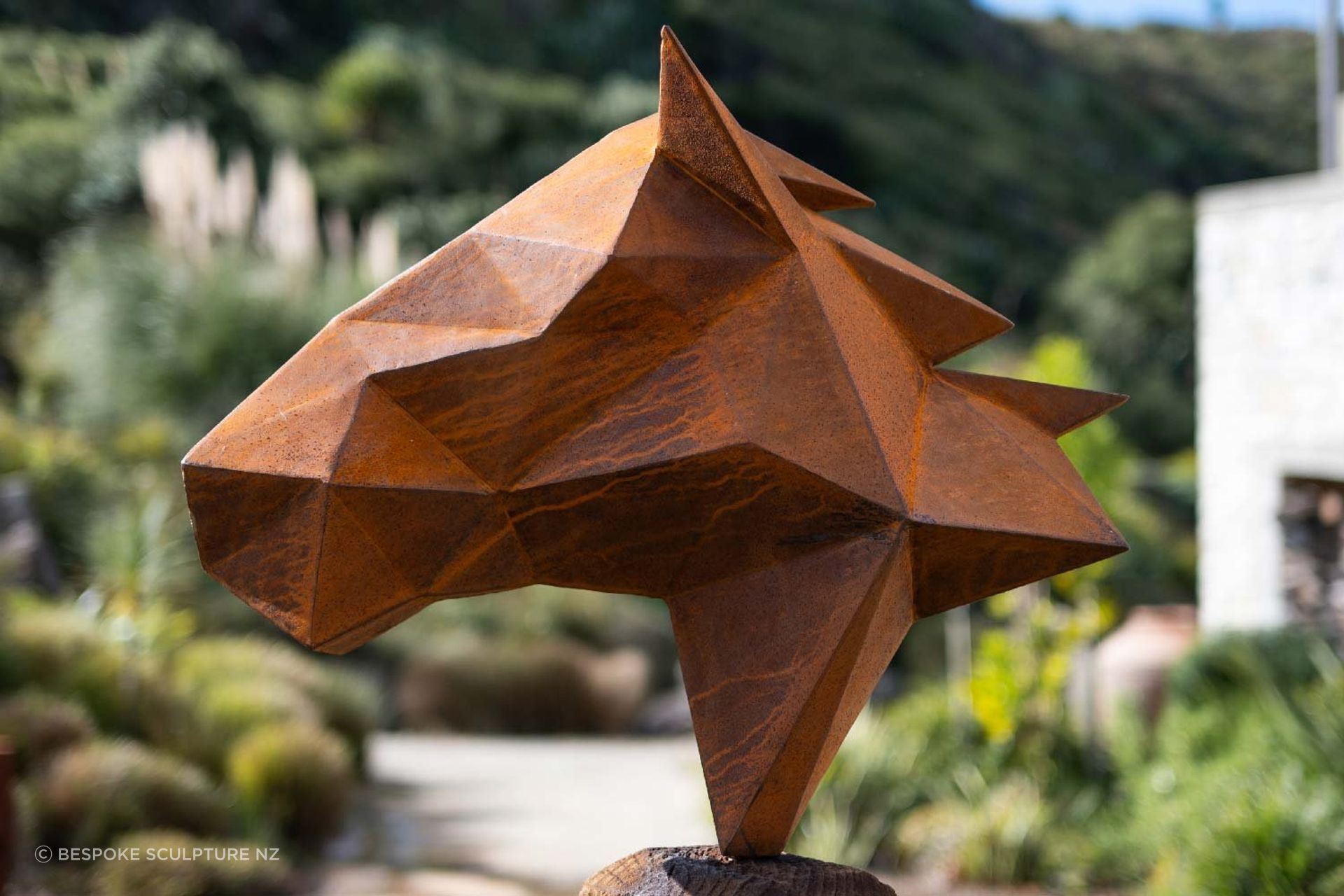
3. Atmosphere and expression
Sculptures are also a strong form of artistic expression that evokes an emotional response, creating ambience and mood. These can resonate with us all but can also be rooted in our experiences and memories, something that Laurence can personally attest to.
“I grew up in Wellington, so the wind was always a factor for me. I have a very attractive female sculpture in a baggy frock that has been blown from the South to the North, along with her hair. I look at that, and I think of my days in Wellington frequently. But, the other pieces I have are abstract bronze on natural New Zealand stone bases, and I find that very homely too.”
4. Social interaction
The social impact of a sculpture in a space should not be underestimated. In the same manner in which they can evoke an emotional response, they can also encourage social interaction, allowing viewers to share their own interpretations of the artwork with one another.
“I think they become talking points when guests are present. It's a conversation maker. It brings people together. Even if people are at a function and they don't know one another, they can start engaging in conversation about it and offer their own impressions. And there's never a right or a wrong answer because everybody has different likes and has a unique opinion on it.”
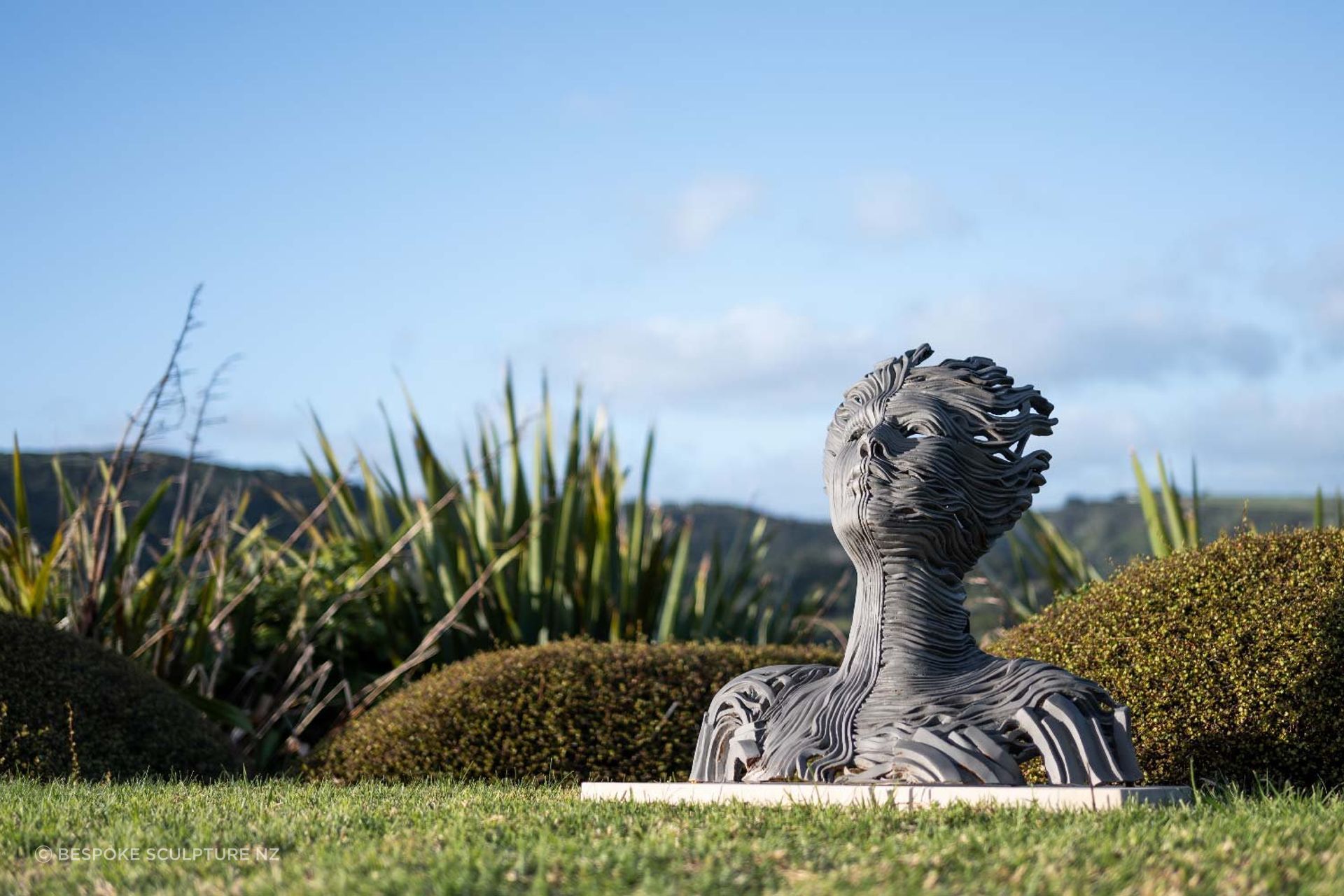
5. Stylish waypoints
People are also using sculptures for more functional purposes, particularly for navigation within large properties or businesses. It’s a great approach that blends innovation with style, taking what would otherwise be an ordinary directional sign and turning it into something a little bit special.
“We did a job for a glamping property down in Southern Marlborough. They often had groups of people visiting the property and had tracks to each glamping area. One was called the ‘Kiwi’, one was the ‘Takahe’, and one was the ‘Wood Pigeon’. They had little castings at the start of each of these tracks, so they knew which way to walk to get to the right glamping site. Again, very unique and very Kiwi. It's New Zealand nature-based sculptures that are there for a purpose, and I think, very advantageous for a lot of reasons.”
6. Personalisation and point of difference
Perhaps the most appealing benefit, especially in the context of contemporary garden design, is the opportunity for personalisation, allowing people to put their unique stamp on a space. It fosters a meaningful and memorable experience, and the creative options now, particularly with bespoke commissions, are almost limitless.
“We commissioned a piece for property near the Bombay Hills that looked back at Auckland towards the Sky Tower. The owner had a concept to incorporate the view so that where he sat in his lounge, he looked straight through the sculpture to see the Sky Tower. So, it looked as one and was very unique.”
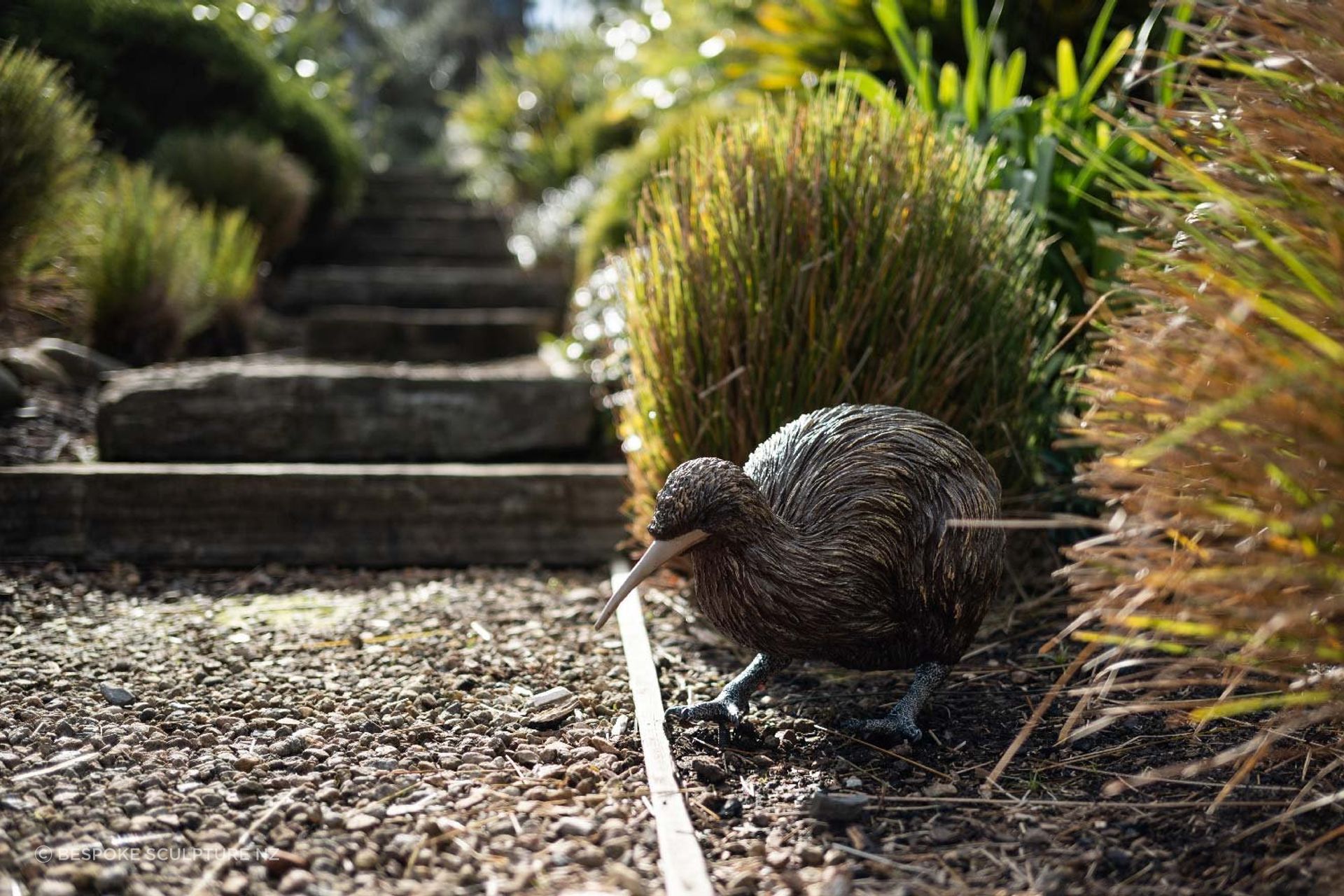
Making the right choice
Despite the myriad of benefits just discussed, professional advice, guidance, materials, and craftsmanship are still key ingredients for success. When it comes to bespoke commissions, experience in a broad range of artistic styles, designs, and materials, as well as good communication and processes, are what allow strong concepts to flourish and be realised as intended. This has been the pillar for Laurence and his team at Bespoke Sculpture NZ, with many positive collaborations as a result.
“We represent a number of artists, and they have their own specialty. We talk to the client to understand what it is they want to achieve, where they want to show “the space”, and then we go to the artist and tell them what the client is after. We then take concepts back and forth to the client, allowing them to have input from day one, all the way through to final sign-off, before it's cast or finally produced. Ultimately, it's all about communication, and there's certainly a level of trust involved, but to date, we haven't had any bad experiences.”
Laurence also has some helpful parting advice on the preparation you can do to hit the ground running, should you choose to embark on a journey to find the perfect sculpture for you.
“You need to research and think about what you want. Not everybody has the ability to sit down and look at a space and design something that's going to work there. There are so many concepts available on a whole myriad of platforms, so have a look, and then put your own flair onto it. The more information you can offer us about what you want, the more we can turn that into a reality.”